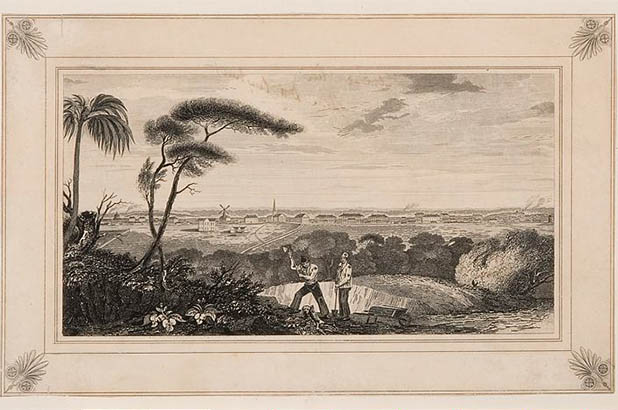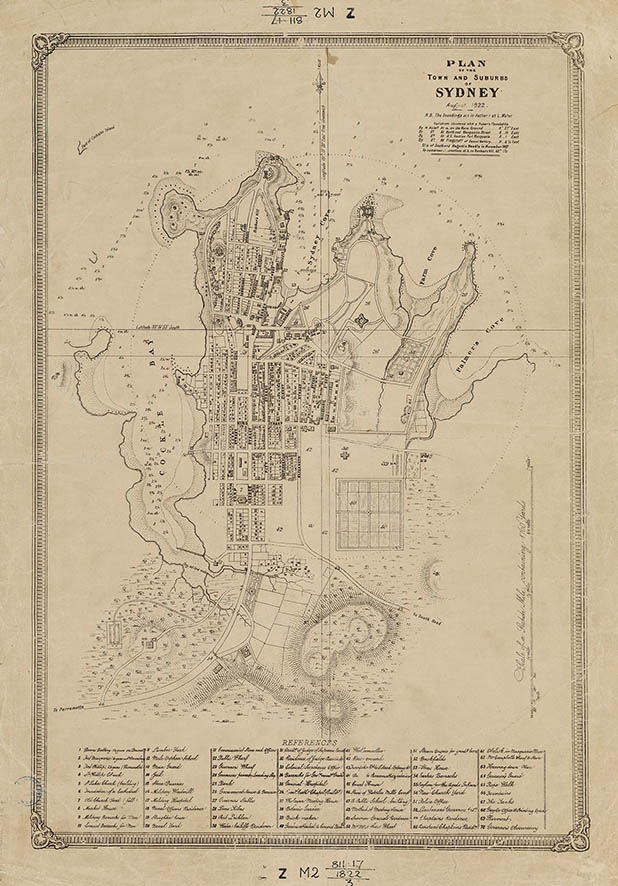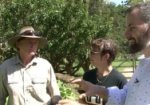It was the government’s responsibility to house, clothe and feed the convicts who were lodged at Hyde Park Barracks. Their rations consisted of meat, flour (baked into bread), maize meal cooked into ‘hominy’, tea and sugar. The rations were to be supplemented with fresh vegetables, but one convict named Charles Cozens wrote that in 1840, the barracks’ soup only contained ‘a slight sprinkling of cabbage leaf’.
According to Governor Macquarie’s Government and General Orders, 1st May, 1819, which were published in the Sydney Gazette, it was intended that convicts would raise their own vegetables in a dedicated kitchen garden, as regular labouring duty, or extra punishment for poor behaviour:
It being intended to enclose a large Portion of Ground in Hyde Park for a Garden, for the Purpose of affording a sufficient Quantity of Vegetable for the Use of Prisoners quartered in the Barracks, IT IS HEREBY DIRECTED, that such Men as abuse the Liberty given to them on Saturdays and Sundays, and who do not return to their Quarters within the prescribed Hours, shall, as a Punishment, after such an offence, be worked in the Barrack Garden for the Whole of the two succeeding Saturdays. Sydney Gazette, May 8, 1819.
The best laid plans…
A map of Sydney (detail below, full image at the end of the page) drawn in 1822 shows an extensive garden plot (40) south-east of the barracks (10), spanning the area where Cook and Phillip Park, the Australian Museum, and Sydney Grammar School now stand. The symmetrical layout shown on the map is typical of gardening systems of the day, but belies its steep slope and a sandstone ridge running through it.

Plan of the Town and Suburbs of Sydney, August, 1822 (detail). State Library of New South Wales: M2 811.17/1822/7
Little is known about the garden, how long it operated or how much food it produced. By 1820, four-acres of ground had been cleared and an octagonal, two-roomed ‘gardener’s lodge’ was built on the site. Messrs Stone and Lawless (aptly named, it seems, when you think about their project) were paid to erect a stone wall around the perimeter of the garden, presumably to keep convict workers in and keep thieves out – theft was a common problem for Sydney gardeners, but reports indicate that it had still not been completed in February 1821.
A fruitless enterprise?
Commissioner Bigge’s report to the government on the state of the colony in 1821 says that the area had proved unsuitable for a productive garden: the ground was too steep; its soil was ‘of the worst description’ and would be too costly to improve it for vegetable crops. It appears that the necessary vegetables for convicts’ meals – cabbages, turnips, potatoes – would have to be procured elsewhere.

Sydney from Woolloomooloo Hill, John Carmichael, 1829. Courtesy Beat Knoblauch Collection, photo Jenni Carter
This image above, sketched in 1829 shows the location of the walled garden in relation to the barracks, but it is unclear whether it is still in use at this point in time.

Plan of the Town and Suburbs of Sydney, August, 1822. State Library of New South Wales: M2 811.17/1822/7



